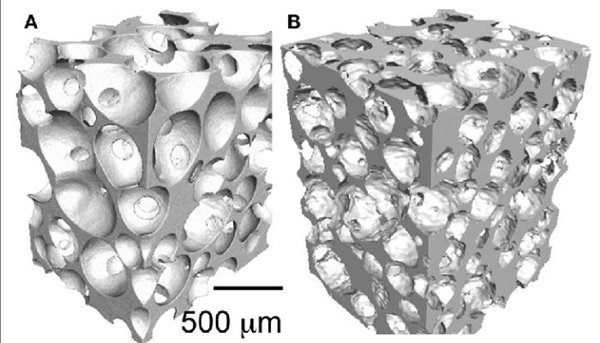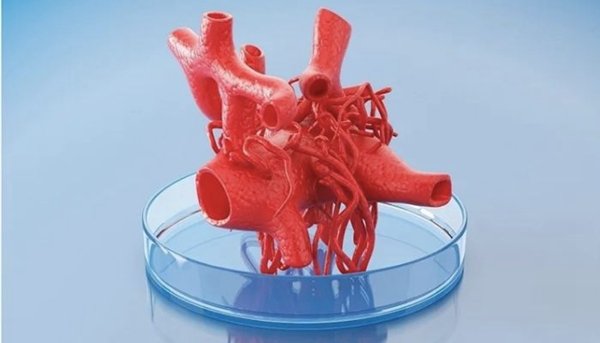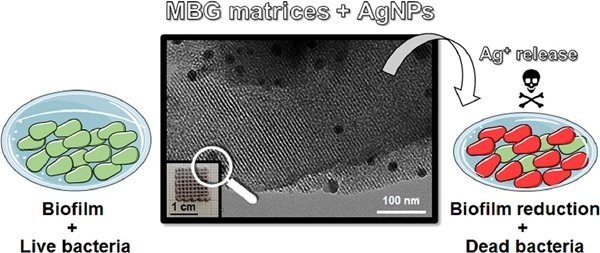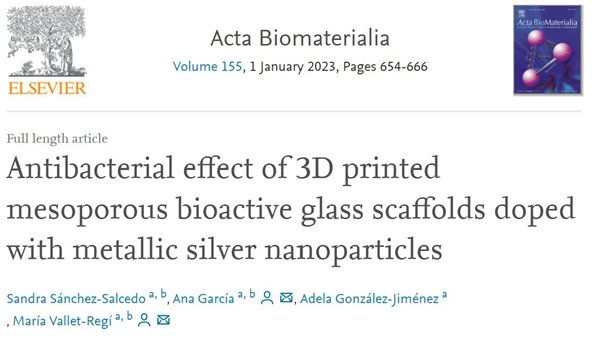2023Year1moon9Japan, according to Mohou.com, from MadridCompleteUniversity researchers have proposed,3DPrinting could play an important role in the regeneration of bone tissue, producing antibacterial scaffolds on which bones can grow.

△Paper Image Summary
This article is composed ofSandra Sánchez-Salcedo、Ana Garcia、Adela González-JiménezaAndMaria Vallet-Reghiconducted a study entitled “Antibacterial effect of 3D printed mesoporous bioactive glass scaffolds doped with metallic silver nanoparticles“The article was published in”Acta Biomaterials“Newspaper.
For more details on the methods and results of this bone regeneration experiment, you can find further information here, link to the article:
Bones serve as connective tissue and are primarily composed of living cells, a collagen matrix, and minerals primarily composed of calcium and phosphate. Reducing damage caused by trauma and treating possible subsequent infections is one of the major challenges in bone tissue engineering. Additionally, due to the increase in the number of implantable medical devices, the number of implant-related infections has also increased significantly. The management of implant-related infections constitutes a serious problem with important clinical and socio-economic implications. The ability of bacteria to form biofilms on inert material surfaces and adjacent tissues results in reduced susceptibility to host defenses and antimicrobial therapies. Current treatments often involve surgery, systemic antibiotics, or even implant resection, leading to additional surgeries, prolonged hospitalization, high side effects, and increased mortality.
Bone tissue engineering requires the use of three-dimensional data (3D) The scaffold serves as a temporary template to ensure complete cell colonization for bone tissue regeneration. For adequate cell attachment, proliferation and differentiation, scaffolds must have 3D Interconnected porous hierarchical structures and appropriate surface chemistry and morphology. Since 20 century 90 Since the 1990s, rapid prototyping (PR) technology is widely used to manufacture materials of different porosity 3D Scaffolding, these porosities were previously designed by computer.PRThe technology consists of filaments obtained by direct writing with ink and extrusion, from a small needle attached to the ink cartridge, printing layer by layer with3DComputer-aided design designs the shape and size of the bracket.
Unfortunately, stents implanted in the body are classified as“Foreign bodies”, which increase the risk of introducing bacteria, particularly in areas poorly supplied with blood. A research team synthesizes mesoporous bioactive glass nanocomposites—In other words, it contains the diameter in2has50Nanoporous nanomaterials then inMBGThe metallic silver nanoparticles are uniformly incorporated into the matrix (AgNP) to solve the problem of implant-related infections by reducing bone tissue regeneration. Chemical doping is a common method in the semiconductor field, such as adding impurities to semiconductors to change their properties, based on metal-doped bioceramics. 3D The development of new materials for stents is also a promising research direction.

△Bioactive glass stent (A)ground–gel foam and (B) fusion derivative gel–Foam casting.(Image source:JonesAndHench, 2013)
This study usedEnvisionTECbusiness3D biotracer™ bioprinter, using rapid prototyping technology (PR)Prepare3Dstay. Once printed, the scaffolds are added individually12holeTranswellplate—A brand of well plates for cell culture. According to the study, these stents act as “temporary model“allowing intact cell growth to promote bone regeneration. The researchers discovered that due to the release of silver ions into the medium,3DThe stent has antibacterial properties. They believe this antibacterial property caused by silver could have potential applications in healthcare and bone tissue regeneration, as it reduces the risk of infection and bacterial growth.
The government of Uganda is2022Year11A bioprinter was loaded into the rocket launched to the Moon to facilitate similar experiments.3DBioprinting experiments. Their goal is to conduct experiments on tissue in weightlessness.

△3DPrinting technology is often used for medical purposes. (Image source:Yaremenko Sergii / Shutterstock)
Source: Antarctic Bear
Daguang focuses on providing solutions such as precision CNC machining services (3-axis, 4-axis, 5-axis machining), CNC milling, 3D printing and rapid prototyping services.











































